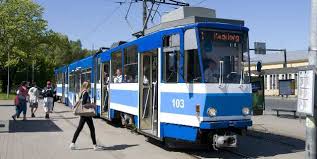Education and Science, Estonia, Transport
International Internet Magazine. Baltic States news & analytics
Tuesday, 23.04.2024, 12:46
Summer school of free public transport soon in Tallinn
 Print version
Print version |
|---|
The 150 participants registered in the summer school taking place in Tallinn University include regional, state and European level planners of politics, members of non-governmental associations, experts and representatives of interest groups who are fascinated by the closely intertwined issues of transportation, environment, social cohesion, economy, budget and spatial planning.
Foreign journalists from China, Russia, New Zealand, South Korea and various countries of the European Union shall also take part.
One of the headliners of the summer school that starts with a conference day, is the European Commissioner for Transport Siim Kallas. At the conference also Aubagne (France), Chengdu (China), Hasselti (Belgium) and Zory and Zabki (Poland) in addition to Tallinn shall share their experience with free public transport.
The research results of the scientists of KTH Royal Institute of Technology of Sweden regarding Tallinn's free public transport shall be presented by Dr Oded Cats. The policy of social space development shall be expanded upon by Professor Georg Sootla from Tallinn University.
"Today, many cities and local government areas face the pressure of increasing the cost of tickets of public transportation. Yet this involves a serious risk that the public transport shall be used even less," the Mayor of Tallinn Edgar Savisaar described the main topic of the summer school where he shall make the opening presentation. "As in Europe public transport is subsidized mostly more than 50 percent, more and more cities are starting to pose the key question – why not introduce free public transportation to justify the current subsidization rate, to increase the usage of public transport and to reduce car traffic."








 «The Baltic Course» Is Sold and Stays in Business!
«The Baltic Course» Is Sold and Stays in Business!

